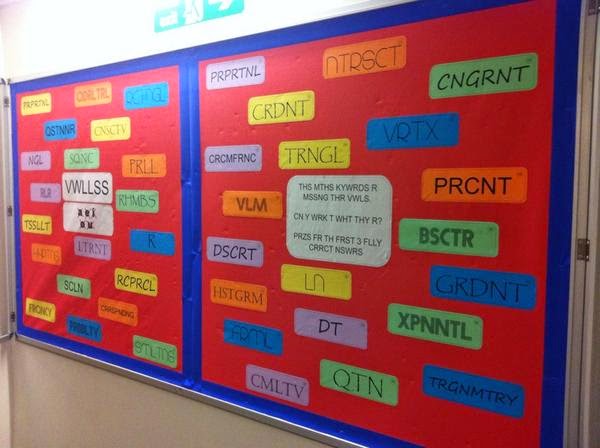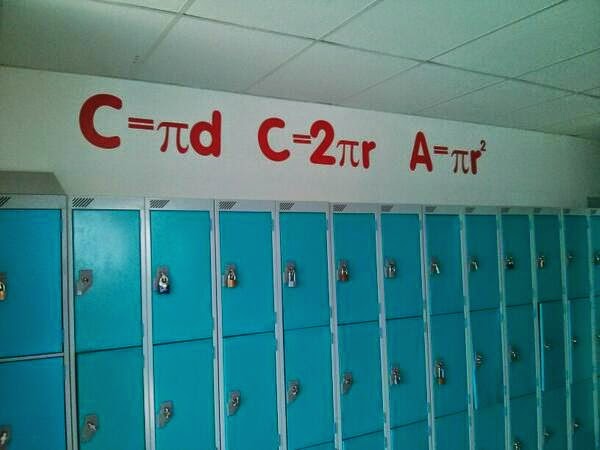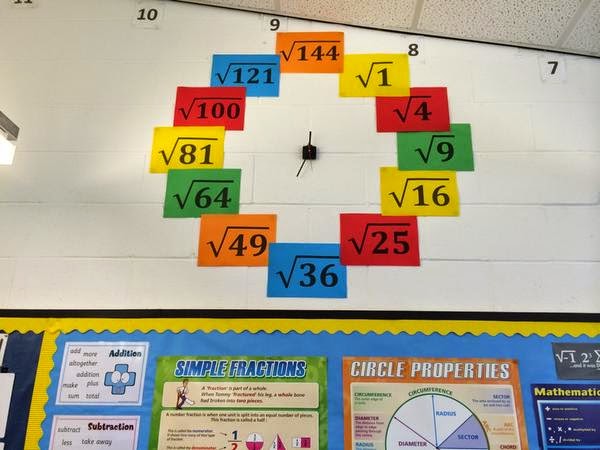1. Practical ideas from Maryse. It sounds like Maryse (@AllThingsMaths) has done an amazing job transforming mathematics teaching in her school and enthusing her students with tonnes of creative ideas. Here’s a selection of those she’s shared this week:
- Play catch with eggs and work out the relative frequency of smashing.
- Get an old tyre, paint it and roll it to demonstrate circumference.
- Have a number line painted in the playground.
- Have discussions about going back in time and Doctor Who with travel graphs.
I love these ideas. Follow @AllThingsMaths for lots more.
 2. Maths lies. In response to my post about the Mistake Game, Colin Beveridge (@icecolbeveridge) shared this awesome story ‘My Favorite Liar’. You must read this! It prompted a discussion on Twitter about whether the idea would work in maths. I think it would. In your first lesson with a new class, tell them that you’ll tell one lie per lesson. Your pupils have to identify your lies. In the discussion on Twitter we came up with a good list of lies and misconceptions, such as ‘multiplication makes numbers bigger’, ‘if a number has 6 zeros then it’s in the millions’ and ‘one is a prime number’. The idea is that you slip these lies into your teaching and hope that your pupils will immediately challenge you. And if no-one challenges you then it will make a nice plenary discussion. Mr Allan (@mrallanmaths) is going to try it out – I’m really looking forward to hearing how effective it is. I think, like the mistake game, it will be incredibly engaging.
2. Maths lies. In response to my post about the Mistake Game, Colin Beveridge (@icecolbeveridge) shared this awesome story ‘My Favorite Liar’. You must read this! It prompted a discussion on Twitter about whether the idea would work in maths. I think it would. In your first lesson with a new class, tell them that you’ll tell one lie per lesson. Your pupils have to identify your lies. In the discussion on Twitter we came up with a good list of lies and misconceptions, such as ‘multiplication makes numbers bigger’, ‘if a number has 6 zeros then it’s in the millions’ and ‘one is a prime number’. The idea is that you slip these lies into your teaching and hope that your pupils will immediately challenge you. And if no-one challenges you then it will make a nice plenary discussion. Mr Allan (@mrallanmaths) is going to try it out – I’m really looking forward to hearing how effective it is. I think, like the mistake game, it will be incredibly engaging.
3. Box plots party. In response to my post about teaching box plots, Pete Sides of the South Yorkshire Maths Hub (@SYMathsHub) suggested a lovely activity in which pupils discuss the ages of guests at different types of party, to help them understand the concept of spread. For example you could ask them to draw a box plot representing the ages of guests at an 18th birthday party, a wedding, a child’s party etc. I like this idea so I turned it into a worksheet and added it to my blog post.
 4. 100 people. I came across these visuals ‘If the world were a village of 100 people’. Maryse (@AllThingsMaths) told me of the related video, which reminded me of another visually striking video, Debtris. I thought these ideas might be nice for form time or PSHE but Mark Greenaway (@suffolkmaths) then shared this data and this blog about the psychology of percentages. The blog is well worth a read, it’s an interesting idea for introducing the concept of percentages in maths. @El_Timbre shared this display work resource which she created to help students with the visualisation.
4. 100 people. I came across these visuals ‘If the world were a village of 100 people’. Maryse (@AllThingsMaths) told me of the related video, which reminded me of another visually striking video, Debtris. I thought these ideas might be nice for form time or PSHE but Mark Greenaway (@suffolkmaths) then shared this data and this blog about the psychology of percentages. The blog is well worth a read, it’s an interesting idea for introducing the concept of percentages in maths. @El_Timbre shared this display work resource which she created to help students with the visualisation.
5. Percentage triangles. I’ve been using speed distance time triangles for years – in fact I think I was taught them when I was at school. Trigonometry triangles are similar. I’ve never given much thought to the fact that my students are missing an opportunity to practise rearranging formulae. I understand the reason for mixed views on these methods, but I do rather like the triangle shared by Malc Henderson (@malc_henderson) for solving reverse percentage problems. It’s nice to have a range of tools to support students when they’re preparing for their GCSEs.
6. Display ideas. Clarissa Grandi (@c0mplexnumber) posted a picture of her new ‘vwllss’ corridor display (inspiration from @El_Timbre). It looks fantastic – what a good idea!
Other good display ideas I’ve seen recently include circle formulae by Dawn (@mrsdenyer), a square root clock by Duncan Smart (@duncsmart), and an interactive number puzzle for a maths corridor or classroom, shared by Mr C Ward (@MrWardMaths).
There you go, six maths gems from @mathsjem (my initials are JEM by the way, it’s not a spelling mistake!). This is just a small selection of the good ideas I’ve seen on Twitter this week. More to come next week!
I’m working on a few posts at the moment, including one on introducing algebra and one on introducing differentiation – if you have any great ideas then please.
 |








